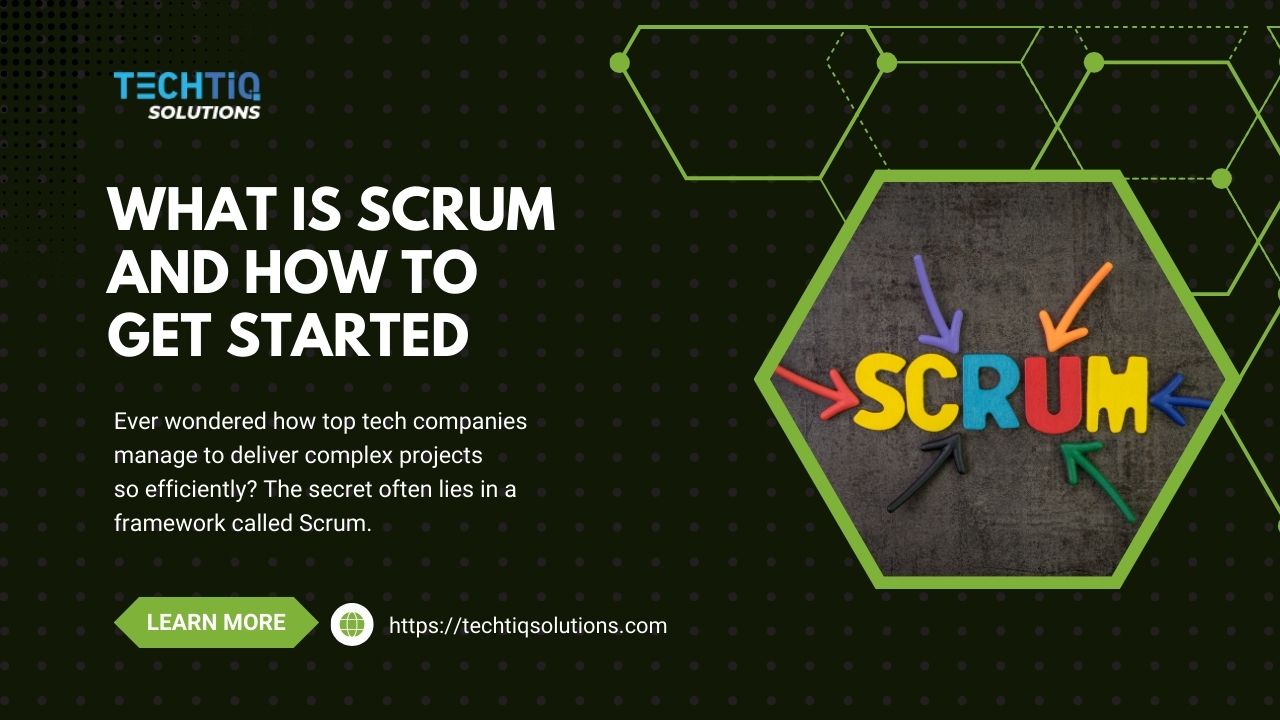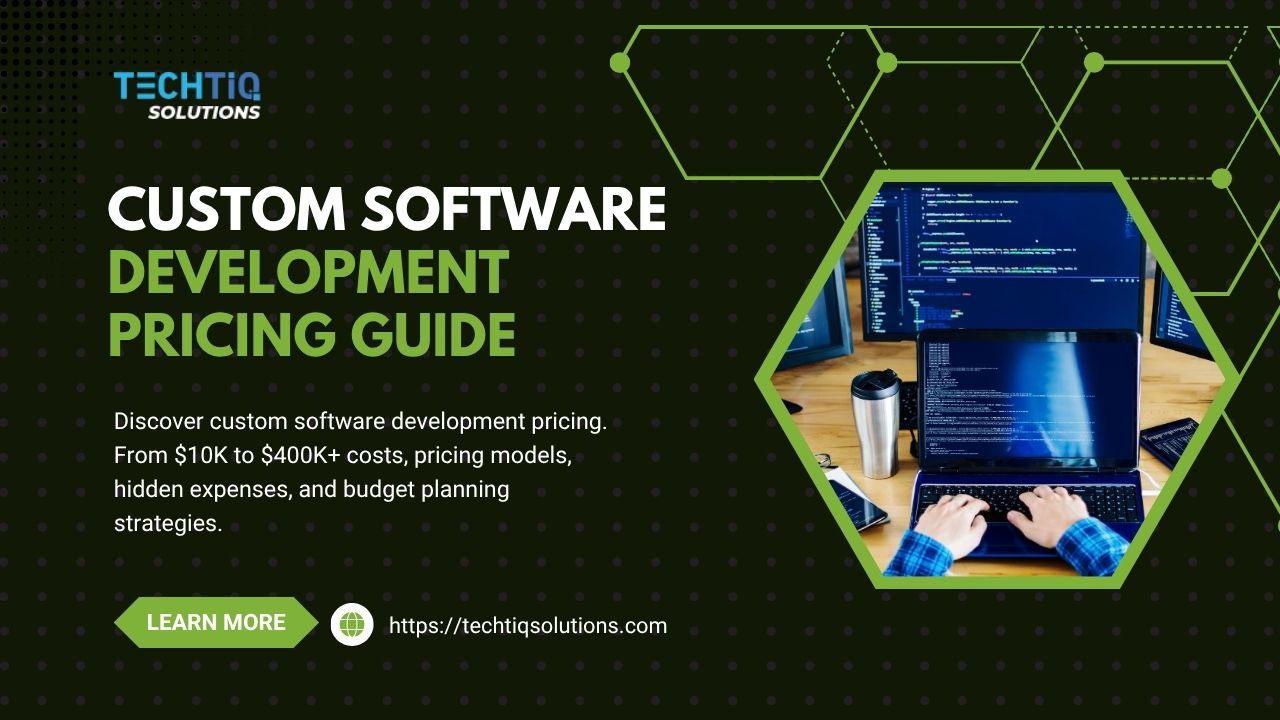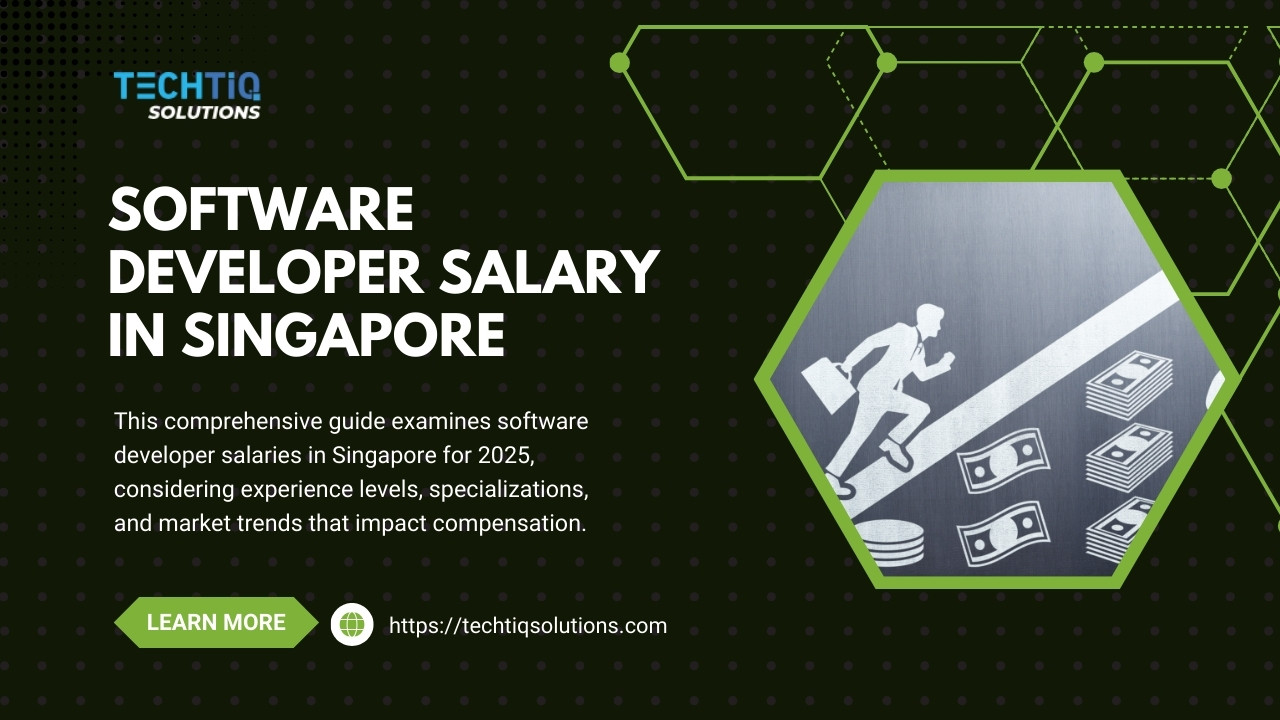Ever wondered how top tech companies manage to deliver complex projects so efficiently? The secret often lies in a framework called Scrum.
With its straightforward processes and focus on collaboration, Scrum has revolutionized how teams work together to create exceptional products.
Key Takeaways
-
Scrum is an agile framework that helps teams deliver value through collaboration, adaptability, and regular feedback
-
The Scrum framework consists of specific roles (Product Owner, Scrum Master, Development Team), events, and artifacts
-
Implementing Scrum properly requires understanding its core values, principles, and common practices
-
Getting started with Scrum involves team training, setting up the right tools, and committing to continuous improvement
What is Scrum?
Scrum is an agile framework designed to help teams work together effectively on complex projects. While it’s most commonly associated with software development, Scrum’s flexible approach makes it valuable across many industries. At its core, Scrum breaks down large projects into manageable chunks called “sprints,” typically lasting 1-4 weeks, enabling teams to deliver working parts of a product incrementally rather than all at once.
Unlike traditional project management methods that follow a linear approach, Scrum embraces change and adaptation. It creates a structure that allows teams to respond quickly to feedback and changing requirements, making it particularly valuable in today’s fast-paced business environment where customer needs and market conditions frequently shift.
The term “Scrum” itself comes from rugby, where it refers to a method of restarting play that involves players working together closely to gain possession of the ball. This metaphor captures the essence of the Scrum framework: a collaborative, team-based approach to achieving a common goal.
The History of Scrum Methodology
The Scrum methodology wasn’t created overnight. Its development represents years of experimentation and refinement in the quest for more effective project management approaches.
In 1986, Hirotaka Takeuchi and Ikujiro Nonaka first introduced the concept in their Harvard Business Review article, “The New New Product Development Game.” They described a holistic approach where a cross-functional team works together throughout a project, similar to a rugby team passing the ball back and forth as they move downfield.
Building on these ideas, Ken Schwaber and Jeff Sutherland formally presented Scrum as a development framework at the OOPSLA conference in 1995. Since then, they’ve continued refining the approach, co-authoring “The Scrum Guide” in 2010, which has been updated several times to reflect evolving best practices.
Over the decades, Scrum has gained widespread adoption, becoming one of the most popular agile frameworks. According to the 17th State of Agile Report, approximately 71% of organizations now use Agile in their software development lifecycle, with Scrum and Scrum hybrids being the most widely used frameworks, demonstrating its enduring relevance in project management.
Scrum vs. Traditional Project Management
To appreciate why so many organizations have embraced Scrum, it helps to understand how it differs from traditional project management approaches:
|
Aspect |
Traditional Project Management |
Scrum Methodology |
|
Planning |
Detailed upfront planning for entire project |
Iterative planning with regular adjustments |
|
Documentation |
Comprehensive documentation required |
Lightweight documentation focused on essentials |
|
Delivery Schedule |
Single delivery at project end |
Regular incremental deliveries throughout project |
|
Change Management |
Formal change request process |
Embraces change as a normal part of development |
|
Team Structure |
Hierarchical with specialized roles |
Cross-functional, self-organizing teams |
|
Customer Involvement |
Mainly at beginning and end of project |
Continuous throughout the development process |
|
Risk Management |
Risk mitigation planning upfront |
Continuous risk assessment and adaptation |
The Scrum approach offers greater flexibility and customer satisfaction through its iterative nature, making it particularly well-suited for projects where requirements may evolve or aren’t fully known at the outset.
Core Values of Scrum
Scrum is built on five core values that shape how teams interact and approach their work:
-
Commitment: Team members personally commit to achieving the goals of each sprint and supporting each other in this endeavor.
-
Courage: Team members show courage by taking on challenges, being transparent about progress and obstacles, and making difficult decisions.
-
Focus: The team concentrates on the work identified for the current sprint and the project’s overall goals.
-
Openness: All aspects of the work and the challenges faced are visible to everyone involved in the project.
-
Respect: Team members respect each other’s expertise, backgrounds, and perspectives, fostering a collaborative environment.
These values create the foundation for successful Scrum implementation, guiding team behavior and decision-making throughout the development process.
The Scrum Framework Explained
The Scrum framework consists of specific roles, events, and artifacts that work together to create a structured yet flexible approach to project management.
Scrum Roles
Scrum defines three key roles, each with distinct responsibilities:
-
Product Owner: This person represents the customer’s interests and is responsible for maximizing the value of the product. The Product Owner maintains the product backlog, prioritizes items based on business value, and ensures the team is always working on the most valuable items.
-
Scrum Master: Often described as a servant-leader, the Scrum Master helps the team perform at their highest level by facilitating events, removing obstacles, and ensuring Scrum practices are followed. They protect the team from outside interruptions and help everyone understand Scrum theory and practice.
-
Development Team: This cross-functional group of professionals does the work of creating product increments. The Development Team is self-organizing, meaning they decide how to turn backlog items into working functionality, and they’re collectively accountable for meeting sprint goals.
Scrum Events
Scrum includes five formal events that create regularity and minimize the need for meetings not defined in the framework:
-
Sprint: The heart of Scrum, a sprint is a time-boxed period (usually 1-4 weeks) during which a “Done”, useable, and potentially releasable product increment is created. Each sprint has a goal and a plan for achieving it.
-
Sprint Planning: This meeting kicks off each sprint, with the entire Scrum team determining what can be delivered in the upcoming sprint and how that work will be accomplished.
-
Daily Scrum (Daily Stand-up): A brief (usually 15-minute) daily meeting where the Development Team coordinates activities and creates a plan for the next 24 hours, discussing what was done yesterday, what will be done today, and any obstacles.
-
Sprint Review: Held at the end of each sprint, this session allows stakeholders to provide feedback on the completed work, and for the team to demonstrate what they’ve accomplished.
-
Sprint Retrospective: The final event of a sprint, where the Scrum team reflects on how the sprint went regarding processes, tools, and team interactions, identifying improvements for the next sprint.
Scrum Artifacts
Scrum defines three primary artifacts that represent work or value:
-
Product Backlog: An ordered list of everything that might be needed in the product, maintained by the Product Owner. It evolves continuously as more is learned about the product and its users.
-
Sprint Backlog: The set of Product Backlog items selected for the Sprint, plus a plan for delivering them and realizing the Sprint Goal.
-
Increment: The sum of all Product Backlog items completed during a Sprint, integrated with the value of all previous Sprints. Each increment must be “Done,” meaning it meets the Definition of Done.
Benefits of Implementing Scrum Methodology
Organizations adopt Scrum for numerous compelling reasons:
Increased Productivity and Efficiency
By breaking work into manageable chunks and focusing on a limited set of tasks in each sprint, teams often experience significant productivity gains. According to industry statistics, Agile teams are around 25% more productive than their non-Agile counterparts.
The regular cadence of sprint events creates a sense of urgency that helps maintain momentum, while the self-organizing nature of Scrum teams empowers members to find the most efficient ways to accomplish their goals.
Enhanced Product Quality
Scrum’s emphasis on delivering working increments at the end of each sprint naturally builds quality into the development process. Research shows that teams practicing “Full Scrum” (following all core practices) have achieved up to 250% higher product quality.
Regular reviews and testing throughout the project help identify issues early when they’re less costly to fix. The sprint retrospective also gives teams an opportunity to continuously refine their processes, leading to ongoing quality improvements.
Greater Customer Satisfaction
With regular product demonstrations and opportunities for feedback, customers can see progress and provide input throughout development. This collaborative approach ensures the final product aligns closely with customer needs and expectations, reducing the risk of delivering something that misses the mark.
Improved Team Morale and Collaboration
Scrum’s emphasis on self-organization and cross-functional collaboration creates an environment where team members feel valued and empowered. According to a study on Scrum statistics, 85% of teams report that their work life improved after implementing Scrum.
Daily stand-ups and other Scrum events facilitate communication and build relationships among team members. The transparency inherent in Scrum also helps build trust, as everyone has visibility into the project’s progress and challenges.
Better Risk Management
The iterative nature of Scrum means that risks can be identified and addressed early in the project lifecycle. By delivering working increments regularly, teams can validate assumptions and adjust course as needed, minimizing the impact of incorrect initial assumptions or changing market conditions.
TechTIQ Case Study: Scrum Implementation Success
TechTIQ Solutions has successfully implemented Scrum methodology across various projects, demonstrating the framework’s effectiveness in real-world scenarios.
One notable example is their work on the Mobile Team Manager project, a comprehensive field and office management suite for field service-based businesses. Using Scrum methodology, TechTIQ’s development team was able to tackle complex requirements while maintaining flexibility for changing client needs.
Client Challenge: The client needed a robust system to manage employees, assets, and jobs while supporting multiple features like scheduling shifts, resources, and vehicles. The system required real-time data updates, interactive document handling, and mobile support with offline capabilities.
TechTIQ’s Scrum Approach: By implementing Scrum, TechTIQ broke down this complex project into manageable sprints. The development team used daily stand-ups to coordinate their efforts, sprint planning to prioritize features, and regular reviews to demonstrate progress to the client.
Results: Using Scrum methodology, TechTIQ successfully delivered a comprehensive solution that included:
-
User management with roles and permissions
-
Interactive document handling
-
Team, job, shift, and resource management
-
Real-time data updates and chatting
-
Mobile apps with offline capabilities
The iterative nature of Scrum allowed TechTIQ to adapt quickly to client feedback, ensuring that the final product perfectly matched their needs. The regular sprint reviews also helped maintain client confidence throughout the development process, as they could see tangible progress every few weeks.
Common Challenges When Implementing Scrum
While Scrum offers numerous benefits, organizations often face challenges when adopting the framework:
Resistance to Change
People naturally resist change, and transitioning to Scrum requires significant shifts in how teams work and think about projects. Long-established workflows, roles, and processes must evolve, which can create discomfort and opposition.
According to the 17th State of Agile Report, organizational culture clashing with Agile values is one of the most common barriers to successful implementation.
Solution: Start with education about why the change is happening and the benefits it will bring. Involve team members in the transition process, address concerns openly, and celebrate early wins to build momentum.
Misunderstanding Scrum Principles
Organizations sometimes implement Scrum as a set of practices without understanding the underlying principles, leading to “zombie Scrum” where teams go through the motions without reaping the benefits.
Solution: Invest in proper training for all team members, not just Scrum Masters. Read authoritative sources like the Scrum Guide, and consider bringing in experienced coaches for guidance during the initial implementation.
Lack of Management Support
Without strong management support, Scrum initiatives often falter. When management doesn’t understand or value Scrum, they may undermine it by demanding traditional status reports or imposing deadlines that conflict with the sprint cycle.
Research shows that about 36% of organizations report that their leadership doesn’t understand Agile and even creates roadblocks, making this one of the most significant challenges.
Solution: Educate management about Scrum benefits, involve them in appropriate Scrum events, and show them concrete results. Set clear expectations about how progress will be communicated and measured.
Ineffective Product Ownership
The Product Owner role is crucial but challenging. If the Product Owner can’t make decisions, isn’t available to the team, or can’t effectively manage stakeholder expectations, the entire process suffers.
Solution: Ensure Product Owners receive proper training, have adequate authority to make decisions, and allocate sufficient time for their Scrum responsibilities. Consider pairing new Product Owners with experienced mentors.
Difficulty Maintaining Focus
Teams may struggle to maintain focus during sprints, especially when emergencies arise or stakeholders request changes mid-sprint.
Solution: Establish clear policies for handling interruptions, and empower the Scrum Master to shield the team from distractions. Use the Sprint Review as an opportunity to collect feedback for future sprints rather than changing course mid-sprint.
How to Get Started with Scrum
Ready to implement Scrum in your organization? Here’s a step-by-step guide to getting started:
Step 1: Educate Your Team
Begin by ensuring everyone involved understands what Scrum is and how it works. This education might include:
-
Reading resources like the official Scrum Guide
-
Attending workshops or training sessions
-
Watching instructional videos or webinars
-
Bringing in a Scrum coach for hands-on guidance
Consider having key team members obtain Scrum certifications like Certified ScrumMaster (CSM) or Professional Scrum Master (PSM) to build a solid foundation of knowledge.
Step 2: Define Roles and Responsibilities
Identify who will fill each Scrum role:
-
Select a Product Owner who understands the business goals and can prioritize effectively
-
Choose a Scrum Master who can facilitate the process and remove obstacles
-
Form your Development Team with the cross-functional skills needed to deliver the product
Ensure each person understands their responsibilities within the Scrum framework and has the authority to fulfill their role effectively.
Step 3: Create Your Initial Product Backlog
Work with stakeholders to identify what needs to be built and capture these requirements in the Product Backlog. For each item:
-
Write a clear description, often in user story format (“As a [user], I want [feature] so that [benefit]”)
-
Assign a relative priority based on business value
-
Add acceptance criteria that define when the item is considered complete
Remember that the Product Backlog will evolve throughout the project, so it doesn’t need to be perfect or complete at this stage.
Step 4: Set Up Your Tools and Environment
Select and configure the tools you’ll use to support your Scrum process:
-
Physical or digital boards to visualize work progress
-
Software tools for backlog management (like Jira, Trello, or Azure DevOps)
-
Communication platforms for team collaboration
-
Development and testing environments
Create templates for common artifacts like sprint backlogs, burndown charts, and retrospective notes to streamline your process.
Step 5: Plan and Run Your First Sprint
Begin with sprint planning, where the team selects items from the Product Backlog to work on and creates a plan for the sprint. Keep your first sprint relatively short (1-2 weeks) to get quick feedback on your process.
Throughout the sprint:
-
Hold daily stand-up meetings to coordinate activities
-
Keep your task board updated to reflect current progress
-
Have the Scrum Master address any obstacles that arise
At the end of the sprint:
-
Conduct a sprint review to demonstrate what was completed
-
Hold a retrospective to identify what went well and what could be improved
Step 6: Inspect and Adapt
After your first sprint, take time to reflect on the process and make adjustments. Be prepared to experiment with different approaches to find what works best for your team. Common areas for adaptation include:
-
Sprint length
-
Meeting formats and duration
-
Definition of “Done”
-
Task breakdown and estimation techniques
Remember that becoming proficient with Scrum takes time and practice. Focus on continuous improvement rather than perfection from the start.
Tools to Support Your Scrum Implementation
The right tools can significantly enhance your Scrum implementation. Here are some popular options:
Project Management Tools
-
Jira: A comprehensive tool with extensive customization options and robust reporting features, particularly popular for software development teams.
-
Trello: A simpler, more visual option with a card-based interface that’s easy for teams to adopt.
-
Azure DevOps: Microsoft’s offering that combines development tools, pipelines, and Scrum management features.
-
Monday.com: A flexible work operating system that can be configured to support Scrum workflows.
Communication and Collaboration Tools
-
Slack: A messaging platform that facilitates quick communication and can integrate with many project management tools.
-
Microsoft Teams: Combines chat, video meetings, and file collaboration with integration to other Microsoft products.
-
Zoom: Widely used for video meetings, particularly useful for distributed teams conducting Scrum events remotely.
-
Miro or Mural: Digital whiteboarding tools that help teams collaborate visually, useful for remote sprint planning and retrospectives.
Specialized Scrum Tools
-
ScrumDesk: Purpose-built for Scrum teams with features specifically designed to support Scrum practices.
-
VivifyScrum: An agile project management tool with specific features for Scrum and Kanban approaches.
-
Targetprocess: A visual platform for implementing and scaling agile frameworks like Scrum and SAFe.
When selecting tools, consider your team’s specific needs, existing technology ecosystem, budget constraints, and the learning curve associated with each option.
Scaling Scrum for Larger Organizations
As organizations grow, they often need to scale Scrum beyond a single team. Several frameworks have emerged to address this challenge:
Scrum of Scrums
The simplest scaling approach, Scrum of Scrums involves representatives from each Scrum team meeting regularly to coordinate work, discuss dependencies, and address cross-team issues. This approach works well for relatively small organizations with just a few teams working on related products.
Nexus
Developed by Ken Schwaber (co-creator of Scrum), Nexus is designed for 3-9 Scrum teams working on a single product. It adds a Nexus Integration Team and specific practices to coordinate work across teams while staying true to core Scrum principles.
Scaled Agile Framework (SAFe)
A more comprehensive framework for larger enterprises, SAFe provides detailed guidance for implementing agile practices at the team, program, and portfolio levels. It incorporates Scrum along with other agile practices and addresses aspects like budgeting, governance, and alignment with business strategy.
Large-Scale Scrum (LeSS)
Created by Craig Larman and Bas Vodde, LeSS aims to apply the principles and elements of one-team Scrum to multiple teams working on the same product. It emphasizes a single Product Owner and Product Backlog across all teams to maintain product focus.
When scaling Scrum, start with the simplest approach that addresses your specific challenges. Remember that scaling introduces complexity, so only scale to the extent necessary to meet your organizational needs.
Measuring Scrum Success
How do you know if your Scrum implementation is effective? Here are key metrics and indicators to track:
Velocity and Predictability
Measure how much work the team completes in each sprint (velocity) and how consistent this becomes over time. Increasing predictability helps with sprint planning and release forecasting.
Product Quality Metrics
Track metrics like defect rates, technical debt accumulation, and test coverage to ensure the team is delivering high-quality increments. Quality should improve or at least remain stable as the team matures.
According to Zippia’s research, teams fully embracing Scrum have been shown to reduce defect counts to fewer than 10 per release compared to 20+ defects for teams not using Scrum practices – effectively cutting bug density in half.
Team Satisfaction and Engagement
Regularly assess team morale through surveys or retrospective discussions. High-functioning Scrum teams typically report greater job satisfaction and engagement compared to traditional project teams.
Customer Satisfaction
Gather feedback from stakeholders and end-users about the delivered increments. Increasing satisfaction over time indicates that the team is delivering value and responding effectively to feedback.
Business Value Delivery
Work with the Product Owner to define and track metrics that indicate business value, such as revenue generation, cost reduction, or user adoption of new features.
Statistics show that organizations have seen about a 60% increase in revenue and profit growth after fully implementing Agile methodologies, demonstrating the potential business impact of effective Scrum implementation.
Remember that metrics should be used to inspire improvement, not to punish or control the team. Focus on trends over time rather than absolute numbers, and use multiple indicators to get a holistic view of your Scrum implementation’s effectiveness.
Ready to Transform Your Project Management with Scrum?
Implementing Scrum methodology can revolutionize how your team delivers value, fostering collaboration, adaptability, and continuous improvement. By understanding the core principles and practices of Scrum, you’re well-positioned to begin this transformative journey.
As an AI-Driven software development company in Singapore, we have extensive experience implementing Scrum across diverse projects, from mobile applications to enterprise software systems. Our expertise in agile methodologies, combined with deep technical knowledge, enables us to help organizations like yours successfully adopt Scrum and achieve remarkable results.
Whether you’re looking to implement Scrum for the first time or optimize your existing agile practices, we’re here to help. Our professional custom software development services follow agile principles to deliver high-quality solutions that adapt to changing requirements and provide continuous value.
Ready to get started with Scrum and transform your project delivery? Contact us today at
-
call (+65) 8898 2997
-
or visit our office at 28 Sin Ming Lane #02-145, Midview city, Singapore 573972.
Our team of experts is ready to help your organization achieve greater efficiency, quality, and customer satisfaction through effective Scrum implementation.









